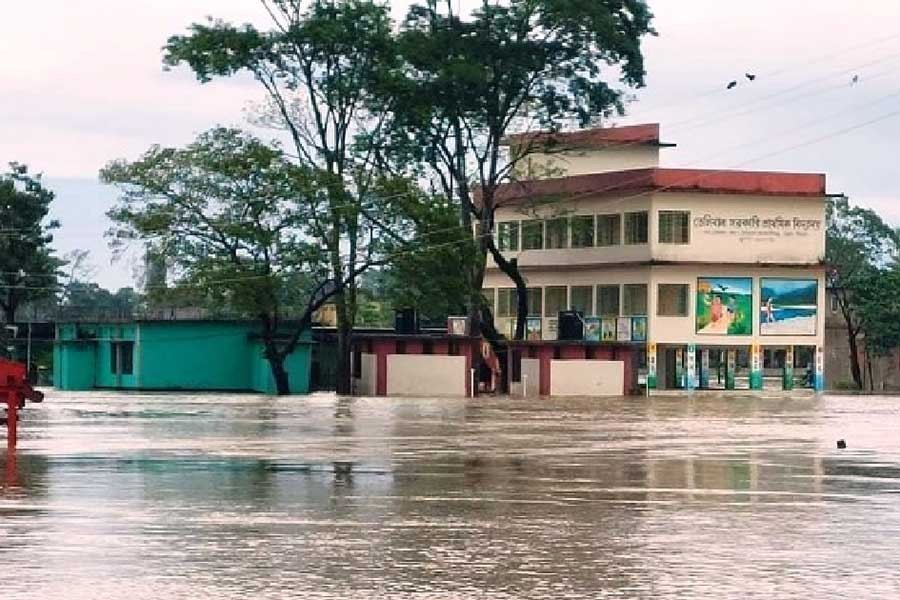Apart from the paddy fields ravaged by the recent flash floods in the country's northern and north-eastern areas, many affected areas and establishments still remain unfocused. Schools in the remote corners of villages mostly comprise them. Many of them have been completely washed away by the sheer force of the current. Lots of others have fallen victim to inundation. Some are worse affected; with normal school activities remaining suspended. Although it's a common scenario found at rural educational institutions during monsoon, this year's untimely flooding appears to have affected schools, colleges etc with vengeance of sorts. These depressing views haven't been seen in the recent past.
In general, the rural schools, both government and non-government, continue to bear the brunt of scores of natural and man-made maladies. Of them, many defy credulity. A photograph published in a Dhaka daily shows teenage students struggling to board a swing tied to a mid-length rope. To an outsider, the view might appear completely absurd and unthinkable. It's because the said makeshift swing is seen operating in the middle of a classroom! Although the children were using their swing at breaks between classes, many guardians vehemently opposed it. In a few days, their voices turned feeble.
Upon approaching the teachers, they came up with a prompt answer. They have allowed a group of local influential people to hang the swing from a classroom's roof on a lucrative offer: the students will be given sport items in exchange of the swing's permission. The school has no funds for purchasing a football, cricket bats and balls etc. Moreover, they do not have any ideal spot to hang the swing. The local powerful group is, however, 'mindful' of the students' curricular activities. They have asked the school authorities to allow students to play with the swing only at breaks between classes. There is a catch. The sport paraphernalia have yet to reach the students. There's yet another precondition. The neighbourhood heavyweights want the fallow land lying in front of the school to be used as a cattle market for seven days prior to the coming Eid-ul-Azha. All the 'gifts' will be delivered to the school authorities only after the successful holding of the cattle market.
Numerous primary and junior high schools in rural areas these days are veritably coerced into allowing cattle markets every year on their playgrounds. The school governing bodies cannot muster courage to raise any objection to the idea, leave alone blocking the chosen grounds off. Arranging cattle markets, weekly 'haats', etc on school premises has turned out to be the norm in the country's rural areas. Coming to the cattle markets, the organisers have the least qualms about their environmental implications, and health impacts on the students and the teachers. At the peak time of these markets, schools have to be declared closed unofficially with the sharp fall in students' attendance. Even after the end of the cattle markets, the stench of animals and their waste remain hanging in the air for several days. It forces many students to bunk classes and spend the designated school hours loitering in far-away areas. Not only the students, people residing in the neighbourhood areas find it difficult to go about their business during and immediately after the cattle trading market.
The education authorities of the country continue to expect big from the rural schools. Their expectation soars every time they offer a tranche of financial incentives to the teachers, like bringing schools under MPO benefits. But in reality, the government benefit packages remain confined to the pay-increase only. The schools and their surroundings, improvement in teaching styles, the classroom conditions, and the students' performance remain secondary issues.


